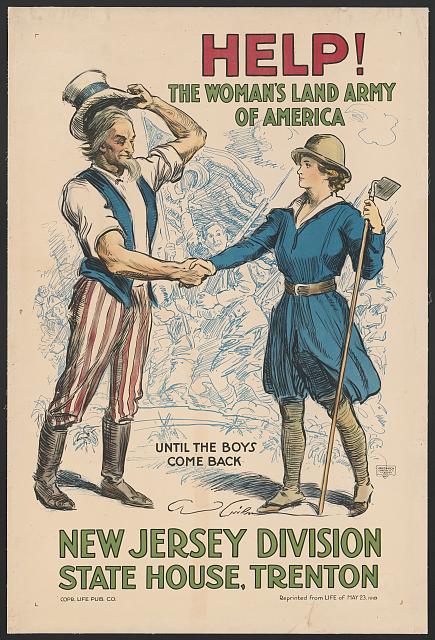9. The World Wars and Labor Shortages
What’s growing here? Asparagus
During World Wars I and II, the pressure to produce surplus food and agricultural products was higher than ever. New Jersey farms, however, faced severe labor shortages as young men joined the military or sought the high-paying manufacturing jobs in New Jersey’s booming war industry.
The establishment of the Women’s Land Army of America (WLAA) responded to this need, recruiting and training female farmworkers across the nation, with nearly 20,000 women participating over the course of World War I. The WLAA did not receive any federal funding; private contributions, many by women’s groups, supported the national headquarters and state branches.
The WLAA instituted an eight-hour work day and demanded that their “farmerettes” be paid the same wages as male laborers. At first, farmers hesitated to employ WLAA workers, fearing they would not be capable of difficult farm labor. Only one Princeton area farmer agreed to hire women at the start of the program, but, after several months, three more farmers came around.
The same challenges faced New Jersey farmers during World War II. A strong food supply was necessary to support the American military and its allies, but there was stiff competition for labor in New Jersey. The Women’s Land Army returned, along with the Victory Farm Volunteers, in which thousands of high school and college students worked on farms during summer breaks, picking vegetables such as asparagus, a leading crop in the state at the time.
Today, women have grown to represent 40% of New Jersey’s agricultural workforce, dwarfing the national average of 27%.
The New Jersey division of the WLAA set standards for the uniforms women farm workers wore during World War I. The uniform consisted of middy blouses, overalls, girl scout shoes, and a straw hat. The “girls” working had to arrange for and purchase their own uniforms.
Library of Congress